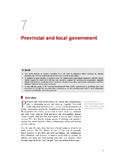Transcription of OCCUPATIONAL EMPLOYMENT AND …
1 For release 10:00 (EDT) Friday, March 30, 2018 USDL-18-0486. Technical information: (202) 691-6569 Media contact: (202) 691-5902 OCCUPATIONAL EMPLOYMENT AND WAGES MAY 2017. Production occupations had EMPLOYMENT of 9 million in May 2017, representing percent of total national EMPLOYMENT , the Bureau of Labor Statistics reported today. The largest production occupation was assemblers and fabricators, all other, including team assemblers ( million) and the highest paying production occupation was nuclear power reactor operators ($94,350). (See chart 1 and chart 2.) The annual mean wage across all production occupations was $38,070, compared with the average wage of $50,620. (See table 1.). The OCCUPATIONAL EMPLOYMENT Statistics (OES) program provides EMPLOYMENT and wage estimates for over 800 occupations in the nation, states, and 600 areas. National data are available by industry for approximately 415 industry classifications and by ownership across all industries, schools, and hospitals.
2 This news release features production, healthcare, and construction and extraction occupations, in addition to STEM (science, technology, engineering, and mathematics) occupations and EMPLOYMENT and wages by typical entry-level educational requirement. National EMPLOYMENT and wage information for all occupations is shown in table 1. Highlights from the May 2017 OES data: Production occupations The largest production occupations also included first-line supervisors of production and operating workers (611,800) and inspectors, testers, sorters, samplers, and weighers (537,500). (See chart 1.). Changes to the OCCUPATIONAL EMPLOYMENT Statistics (OES) Data With the release of the May 2017 estimates, the OES program has introduced several new OCCUPATIONAL and industry aggregations. The May 2017 OES estimates are the first to be produced using the 2017 North American Industry Classification System (NAICS).
3 See the box notes at the end of this news release for more information on current and upcoming changes to the OES data. Chart 1. EMPLOYMENT for the largest production occupations, May 2017. Assemblers and fabricators, all other, including team assemblers First-line supervisors of production and operating workers Inspectors, testers, sorters, samplers, and weighers Helpers--production workers Packaging and filling machine operators and tenders Machinists Welders, cutters, solderers, and brazers Electrical, electronic, and electromechanical assemblers, except coil winders, tapers, and finishers Production workers, all other Laundry and dry-cleaning workers 0 500,000 1,000,000 1,500,000. EMPLOYMENT Source: Bureau of Labor Statistics, OCCUPATIONAL EMPLOYMENT Statistics program. Other than nuclear power reactor operators, the highest paying production occupations were power distributors and dispatchers ($82,310) and power plant operators ($75,970).
4 (See chart 2.). The lowest paying production occupations were pressers, textile, garment, and related materials ($23,080) and laundry and dry-cleaning workers ($23,770). (See table 1.). The state with the highest share of production occupations EMPLOYMENT was Indiana (12. percent), nearly twice the national EMPLOYMENT share. Metropolitan areas with the highest shares of production occupation EMPLOYMENT included Elkhart-Goshen, Ind. (36 percent); Dalton, Ga. (26 percent); and Columbus, Ind. (25 percent). Pay for production occupations in manufacturing industries varied widely. Industries with the highest wages were petroleum and coal products manufacturing ($63,620) and aerospace product and parts manufacturing ($54,040). -2- Chart 2. Highest paying production occupations, May 2017. Nuclear power reactor operators Power distributors and dispatchers Power plant operators Gas plant operators Petroleum pump system operators, refinery operators, and gaugers Stationary engineers and boiler operators First-line supervisors of production and operating workers Chemical plant and system operators Plant and system operators, all other Computer numerically controlled machine tool programmers, metal and plastic All occupations $0 $25,000 $50,000 $75,000 $100,000.
5 Annual mean wage Source: Bureau of Labor Statistics, OCCUPATIONAL EMPLOYMENT Statistics program. Manufacturing industries with the lowest wages for production occupations included seafood product preparation and packaging ($27,710) and several apparel, textile, and leather products industries. Assemblers and fabricators, all other, including team assemblers earned an annual mean wage of $33,180 across all industries. Motor vehicle manufacturing ($46,510) was the highest paying manufacturing industry for this occupation. OES data by state and metropolitan/nonmetropolitan area are available at and , respectively. OES national industry-specific data are available at Healthcare occupations Healthcare practitioners and technical occupations had EMPLOYMENT of million, and healthcare support occupations had EMPLOYMENT of million. Both healthcare OCCUPATIONAL groups combined made up nearly 9 percent of EMPLOYMENT .
6 (See table 1.). -3- Registered nurses, with million jobs, was the largest healthcare occupation. (See table 1.). Most registered nurses worked in the general medical and surgical hospitals industry (1,685,820). Other than registered nurses, the largest healthcare occupations were nursing assistants ( million), home health aides (820,960), and licensed practical and licensed vocational nurses (702,700). (See table 1.). Many of the highest paying occupations were healthcare occupations, including several physician and dentist occupations and nurse anesthetists ($169,450). (See table 1.). The lowest paying healthcare occupations were home health aides ($24,280), veterinary assistants and laboratory animal caretakers ($27,570), and physical therapist aides ($27,910). (See table 1.). Annual mean wages for healthcare practitioners and technical occupations, the larger of the two healthcare OCCUPATIONAL groups, varied by state from $64,620 in Mississippi to $98,020 in Alaska, compared with $80,760 nationally.
7 Several areas in California, including San Jose-Sunnyvale-Santa Clara ($115,280), were among the highest paying metropolitan areas for healthcare practitioners and technical occupations. The lowest paying areas for this OCCUPATIONAL group included Lake Charles, La. ($57,580), and Morristown, Tenn. ($57,670). Construction and extraction occupations Construction and extraction occupations had total EMPLOYMENT of million and an annual mean wage of $49,930 across all industries. (See table 1.). The largest construction and extraction occupations were construction laborers (962,060), carpenters (693,050), and electricians (631,080). (See table 1.). The highest paying construction and extraction occupations were elevator installers and repairers ($77,130) and first-line supervisors of construction trades and extraction workers ($69,200). (See table 1.). The lowest paying construction and extraction occupations included helpers of roofers ($29,710) and helpers of painters, paperhangers, plasterers, and stucco masons ($30,570).
8 By industry, specialty trade contractors ( million) accounted for almost half of EMPLOYMENT in construction and extraction occupations. An additional 26 percent of EMPLOYMENT was in construction of buildings (915,340) and heavy and civil engineering construction (574,960). Local government (330,490) was the industry with the highest EMPLOYMENT of construction and extraction occupations outside of the construction sector. States with the highest percentage of construction and extraction occupations were Wyoming (10 percent) and North Dakota (8 percent), compared with 4 percent of national EMPLOYMENT . -4- Chart 3. Highest paying occupations that typically require less than a bachelor's degree for entry, May 2017. Air traffic controllers Transportation, storage, and distribution managers Nuclear power reactor operators Funeral service managers First-line supervisors of police and detectives Commercial pilots Athletes and sports competitors Radiation therapists Gaming managers First-line supervisors of non-retail sales workers All occupations $0 $25,000 $50,000 $75,000 $100,000 $125,000.
9 Annual mean wage Source: Bureau of Labor Statistics, OCCUPATIONAL EMPLOYMENT Statistics program. Metropolitan areas with the highest concentrations of construction and extraction occupations included Lake Charles, La. (17 percent); Odessa, Texas (13 percent); and Farmington, , and Greeley, Colo. (11 percent each). Annual mean wages for construction and extraction occupations varied by state from $37,660. in Arkansas to $67,450 in Hawaii. Urban Honolulu, Hawaii ($68,800), and Chicago-Naperville-Elgin, ($68,770), were among the highest paying areas for construction and extraction occupations. The lowest paying areas for this OCCUPATIONAL group included Brownsville-Harlingen, Texas ($31,820), and Sebring, Fla. ($32,520). Typical entry-level education Occupations that typically require postsecondary education for entry made up 37 percent of EMPLOYMENT . The largest postsecondary category, occupations that typically require a bachelor's degree for entry, made up percent of EMPLOYMENT .
10 This educational category includes registered nurses, teachers at the kindergarten through secondary levels, and many management, business and financial operations, computer, and engineering occupations. Occupations that typically require a high school diploma or the equivalent for entry made up 39. percent of EMPLOYMENT , and occupations that require no formal educational credential for entry -5- made up 24 percent of EMPLOYMENT . These two educational categories include most production and construction occupations, as well as large occupations such as retail salespersons, cashiers, and general office clerks. The share of EMPLOYMENT in occupations typically requiring an associate's degree for entry ranged from percent of EMPLOYMENT in Nevada to percent in Vermont, compared with percent of national EMPLOYMENT . Average wages were generally higher for occupations that require more education.















